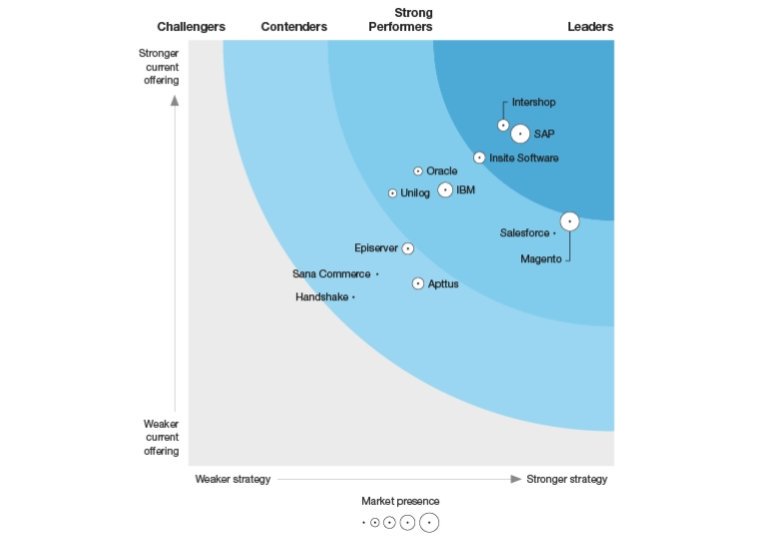This is Part 2 in our B2B e-commerce series. Part 1 focused on B2B Strategy & Differentiation, detailing how B2B e-commerce has evolved and how owners can capitalize on popular features to streamline the buying experience customers. B2B Strategy & Differentiation set the foundation guidelines for building or rebuilding a platform. Now, we’ll examine the finer points of a strategy and how they influence the outcome of an e-commerce site.
Once you define the baseline functionality for your B2B e-commerce strategy, your next step is to delve deeper into each point. You already know how you want to differentiate your business from that of your competitors, now you need to decide which tools and the B2B e-commerce platform will best accomplish those goals.
The way to drive growth and increase market share will depend on your specific challenges and opportunities. A successful deployment requires multiple detailed requirements that will ultimately determine its outcome. Once you understand the parameters of each section, you can sketch out a path to launch.
| High Level | Detailed | |
|---|---|---|
| Business Goals | Required | — |
| Functional Requirements | Required | Needed |
| Technical Requirements | Required | Needed |
Defining the Requirements
Accorin has developed a multi-step requirement gathering process where we drill down into each layer of your requirements. The result is a Business Requirements Document (BRD) that includes common sections, but will be different for each company based on their business. A simple site may only have 10 pages of requirements, while a complex site may have many more.
At a bare minimum, Accorin covers the following points in detail:
Business Rules and Offerings
- Locations: How many e-commerce sites per country are needed? How many languages? How will currency laws affect different locations?
- Delivery: What carriers will be used? What terms and conditions will carriers commit to?
- Payments, Fraud, and Taxes: What payments will be accepted? What tax systems need to be in place?
- Marketing and Promotions: How will distribution channels be organized? How can sales tools improve marketing? Will promotions be one-time or recurring?
- Regulations: Does HIPAA or Prop 65 apply? How will PII be protected?
Product / Catalog Rules
- Product Taxonomy: How will products be named, organized, and advertised?
- Merchandising Approach: Will the site feature user-generated content (e.g., reviews, ratings, etc.)? Will the e-commerce site provide quotes, subscription signups, or downloads? What product information will be featured and where?
- Pricing Logic: Will the site provide tiered or quote-only pricing? Will customers have access to price books? Will pricing be customized for different clients?
- Inventory and Shipping Logic: Can customers pre-order or backorder inventory? Will the site have managed or dropship options?
- Unique Product Attributes: Will Prop 65 or licensed user restrictions apply to any products? How will surcharges be applied to certain products?
Integrations
- ERP: How will Enterprise Resource Planning affect your processes (e.g., orders, returns, cancellations, etc.)?
- Marketing Systems: Will the site provide predictive recommendations for customers? What analytics will be used to drive marketing? How will ratings and reviews be integrated?
Other Considerations
- Technology: What is the ideal configuration for the technology stack, database, and reporting tools?
- Hosting Requirements: Will the servers be on-site? Will the site need SAAS or a VPN to function?
Even the most straightforward of B2B e-commerce sites need to answer these questions in detail. It’s why Accorin takes the time to address the many layers of each point. E-commerce sites are always evolving, and as part of the requirements gathering, a launch scope can be defined with future enhancements planned for the roadmap.
If you’re interested in learning more about our methodology, contact us today for a sample Business Requirements Document.
It’s easy for projects to go awry if they don’t have the right technical strongholds in place. With the right team guiding your way, the complexity of your detailed requirements can be planned for and managed. Having the right partner helps iron out the wrinkles in your strategy so your functionality is as smooth as your demanding customers need it to be.
Evaluating Platform Options
The B2B e-commerce platform that you choose has a major impact on the look, functionality, and overall success of a site, but there is no one-size solution. Accorin uses the following series of steps to evaluate each platform.
Define Key Requirements >> Send Requirements To Short List of Vendors > Review Vendor Responses > Invite A Short(er) List of Vendors in For Demos > Rate Vendors > Negotiate A Contract > Kickoff The Project
Customers with specific needs can adjust this model to fit their needs. For example, companies using SAP as their ERP system may insist on Hybris for their platform. Whether you want to accelerate your initiatives or use a recommendations-based approach derived from industry data, Accorin absorbs your feedback to sketch out an appropriate platform evaluation for you.
Figure 1: Forrester WaveTM B2B Commerce Suites 2018 Q3 2018
This industry analysis graph demonstrates how e-commerce platforms stack up against one another.
Additional Costs
There’s more to a platform than the upfront costs to use it. B2B professionals need to factor in the cost of developers, hosting, and maintenance. (The expenses for each line item can cause budget overruns quickly if they come up piecemeal.) Accorin can develop a Total Cost of Ownership equation that model that represents the multi-year financial investment needed to launch and grow your B2B e-commerce capabilities.
Once you have the gaps filled in, the next step is to plan the rollout and launch. This is where you see all your hard work come together and deliver your final product to customers. As long as you’ve mapped out your strategy and addressed the points above, your clients should be able to navigate your site, select inventory, and confirm shipping details without a hitch.
Sign up for the Accorin Newsletter to be notified when Part 3 of this series debuts: Planning The B2B E-Commerce Execution & Getting Ready To Launch.



